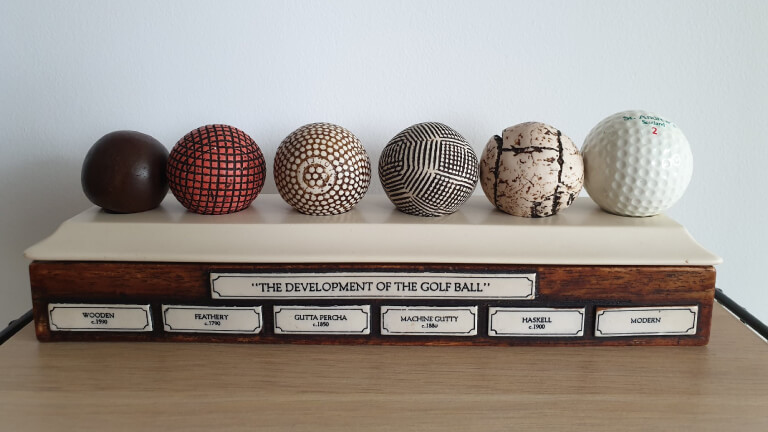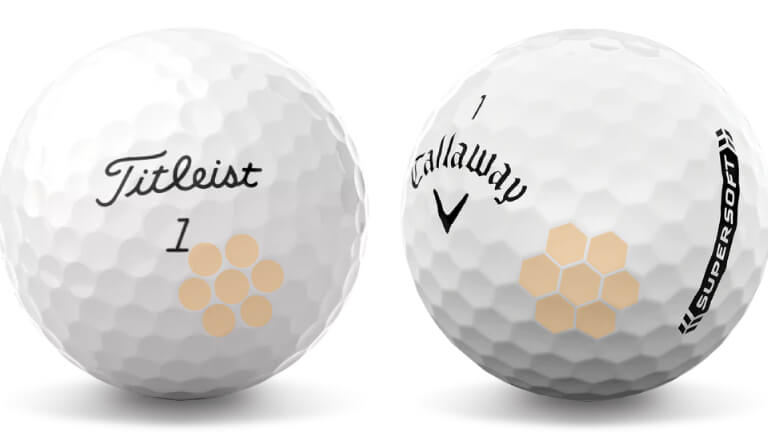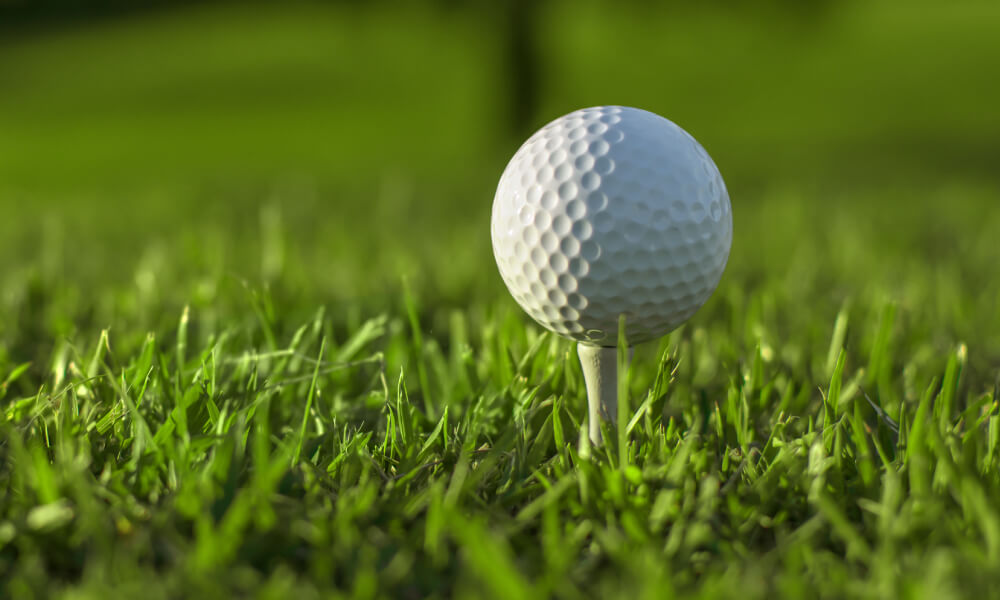Have you ever wondered why golf balls have those distinctive dimples? It seems that those little patterns contain more than what initially appears. In fact, they play a crucial role in the performance of a golf ball.
They are carefully engineered to enhance the ball’s flight and distance. When a golf ball is struck, the dimples create turbulence in the air around the ball. This turbulence reduces the drag on the ball, allowing it to travel faster and farther through the air.
But why dimples? Well, it all comes down to aerodynamics. The dimples on a golf ball help create a thin layer of turbulent air that clings to the ball’s surface. This layer of turbulence reduces the air pressure on the front of the ball and increases the air pressure on the back, creating lift.
In essence, the dimples on a golf ball act as tiny wings, helping to keep the ball in the air for longer and improving its overall performance. So, the next time you tee off, remember that those little dimples are more than just a design feature – they’re the key to a better game. Let’s Learn more about golf balls and their dimples.
Table of Content
The Evolution of Golf Balls: From Smooth to Dimpled

Before we dive into the specifics of dimples, let’s briefly examine the evolution of golf balls. Golf balls haven’t always had the dimpled design we’re familiar with today.
The earliest golf balls, known as “featheries,” were made of leather and filled with wet goose feathers. These balls were not very durable and did not provide consistent performance.
In 1848, Dr. Robert Adams Patterson invented the “gutta percha ball”, also known as the “gutty” or “guttie.” This ball was made from molded tree sap and was much cheaper and more durable than the feather-stuffed balls.
The discovery of dimples
While the gutta percha ball was an improvement over its predecessors, golfers soon discovered that balls with indentations or marks on the surface flew farther and more consistently than perfectly smooth balls. This discovery led golf ball manufacturers to add dimples to their balls intentionally.
David Stanley Froy played in the Open Championship in 1900 with the prototype of a dimpled golf ball. This marked the beginning of dimpling becoming the norm in golf ball design. In the early 1900s, several patents were filed for different dimple patterns, with William Taylor being one of the pioneers.
Why Dimples on Golf Balls?
We must go into the science of aerodynamics, which is the study of how objects move through the air, to fully understand the function of dimples in golf ball performance. A key concept in aerodynamics is “drag,” the force that opposes an object’s motion through a fluid. For a golf ball in flight, air is the fluid, and drag is the force that slows it down.
Aerodynamic Performance
When a golf ball is hit, it encounters air resistance, also known as drag. Dimples on the ball’s surface create a thin layer of air that clings to the surface as the ball moves through the air. This layer of air reduces the drag force acting on the ball, allowing it to maintain a more stable and consistent flight. The dimples create turbulence in the air, which helps the ball cut through it more efficiently.
Lift and Spin
Dimples are also crucial in generating lift and spin on a golf ball. When a ball with a backspin is in flight, the airflow over the top of the ball is faster than the airflow underneath. This difference in airflow creates a pressure differential, resulting in an upward force on the ball. This lift force helps the ball stay in the air longer and achieve greater distance.
Additionally, the dimples on a golf ball create turbulence in the airflow, which causes the air to cling to the ball’s surface for a longer period. This increased air resistance leads to more spin on the ball, allowing golfers to have better control over their shots and achieve more consistent ball flight.
Distance and Accuracy
The combination of reduced drag, increased lift, and enhanced spin due to dimples ultimately leads to improved distance and accuracy. Smooth balls without dimples would experience significantly more drag, resulting in shorter distances. The presence of dimples allows golf balls to maintain their speed and stability in the air, leading to longer drives and more precise shots.
Design and Number of Dimples
Golf ball manufacturers have long been fascinated with the intricate world of dimple designs and patterns. While spherical dimples are the most commonly seen on golf balls, manufacturers have not shied away from experimenting with other shapes as well.
The number of dimples on a top quality golf ball can vary, with counts ranging anywhere from 300 to 500 per ball. However, it is important to note that more dimples on a ball do not automatically equate to better performance. The specific dimple pattern and the quantity of dimples depend solely on the preferences and design choices made by each golf ball manufacturer.

While the traditional shape for dimples is spherical, manufacturers have experimented with various shapes, such as hexagons and teardrops, to optimize performance. The aerodynamic behavior of a golf ball is highly sensitive to dimple depth, and a tiny change of just .001 of an inch can significantly alter the ball’s trajectory and the distance it can cover.
Conclusion
Dimples on a golf ball are not just for aesthetics; they serve a crucial purpose in enhancing the ball’s performance. Dimples reduce drag, increase lift, and generate spin, contributing to longer distances and more accurate shots.
The evolution of golf ball design has led to the development of various dimple patterns and shapes, with each manufacturer striving to create the optimal combination for optimal performance. Now almost all the top golf ball brands produce golf balls with dimple pattern.
So, the next time you hit the links, take a moment to appreciate the science behind those tiny dimples on your golf ball. They are more than just decoration; they are the secret to better shots and a more enjoyable golfing experience.

